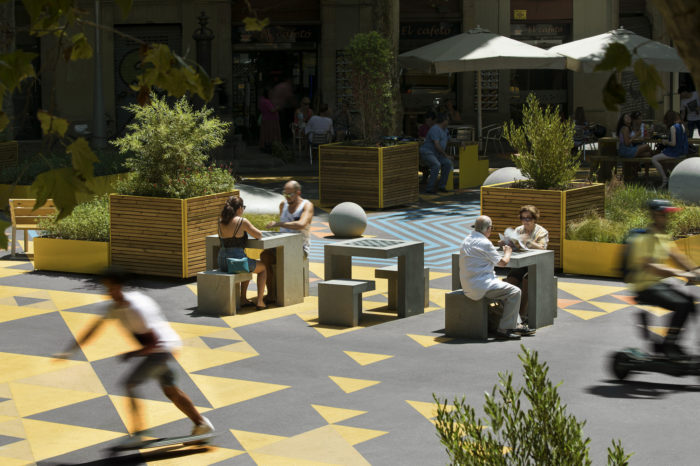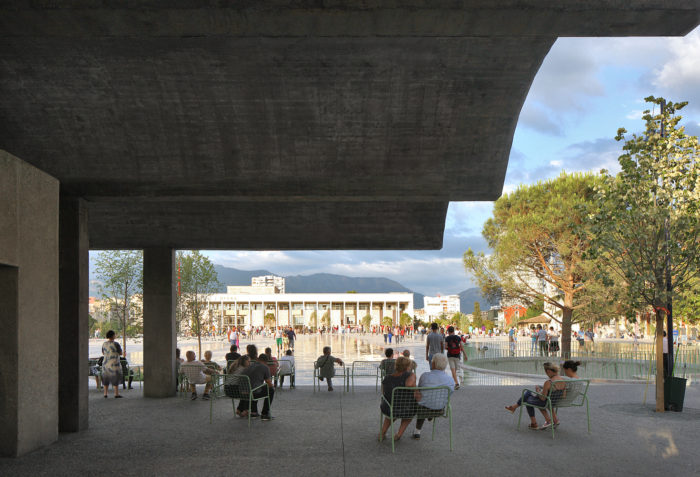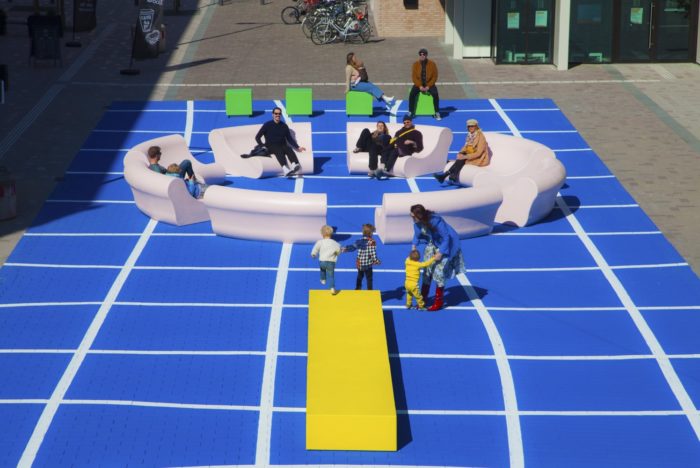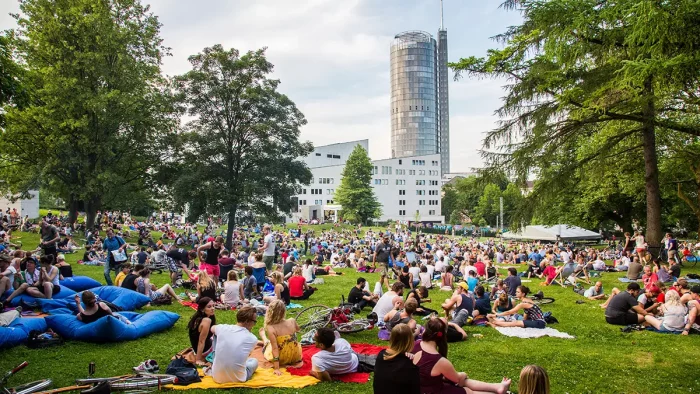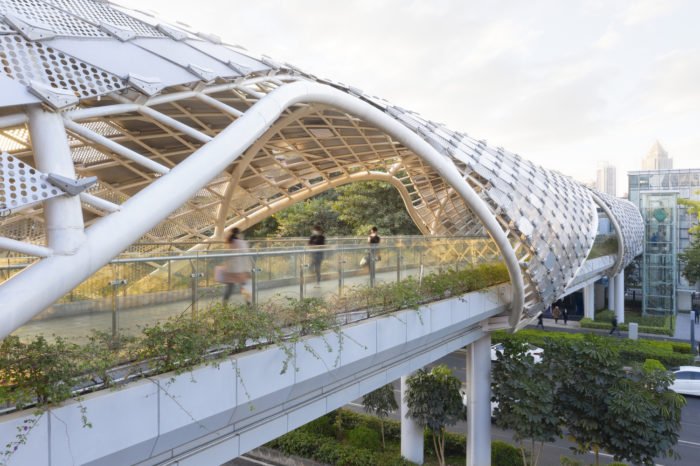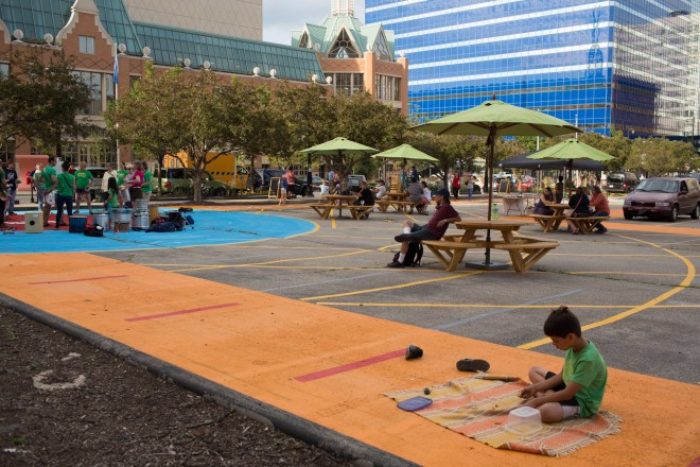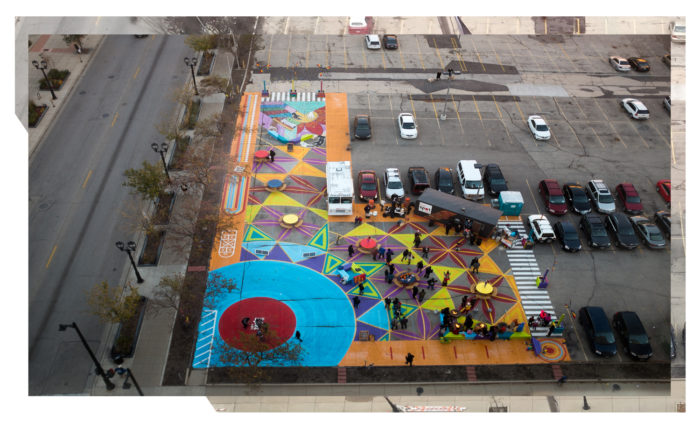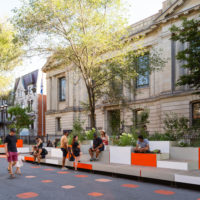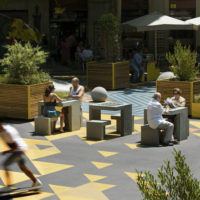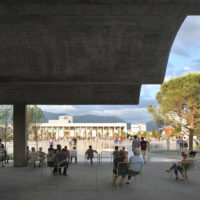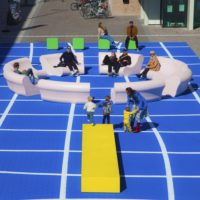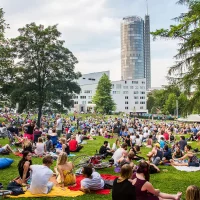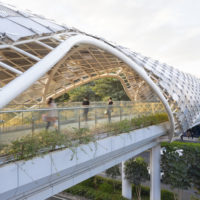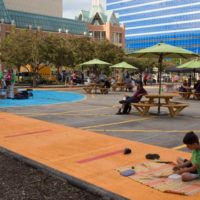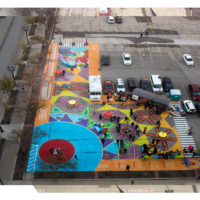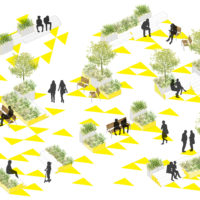It has been found that people who have a solid sense of community are healthier, happier, and more engaged in their communities. However, there is a lack of scientific research investigating the link between a strong sense of community and the overall quality of public space, despite growing interest in how the built environment affects this sentiment.
It is essential to realize that a “sense of place” is of fundamental value to people everywhere – in every city, every town, every neighborhood, and every culture, from all ages. A poor quality and sterile environment can create alienation among residents and users. This results in an area where people feel uncomfortable, where pride and a sense of shared ownership of the environment are low. Also, few people will want to linger in public places where crime, mainly vandalism.
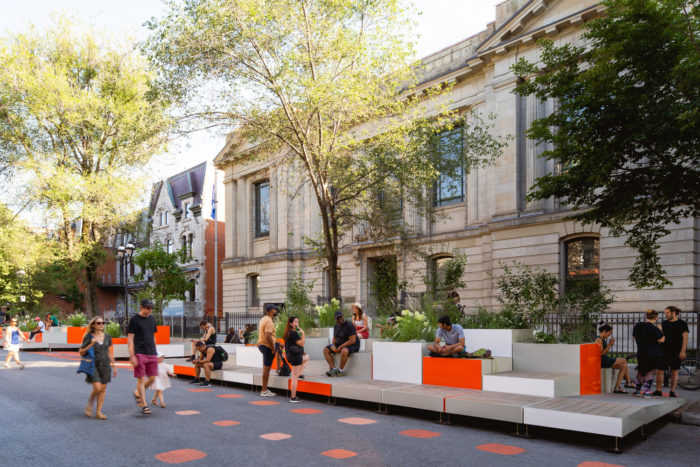
Agora Maximus, Tactical Urbanism Project / LAAB Collective + Signature Design Communication. ©Raphaël Thibodeau
Public places are a central concern for architects and urban designers. For example, Whyte (1998) describes life on the street in a modern city. His comprehensive descriptions of the use of the street-side plazas highlight the issues between places that “work” and those which do not, whether or not people want to be there.
Similarly, Christopher Alexander’s (1987) “pattern” ostensibly describes principles of physical design, focusing less on the structure of buildings and cities and more on the living in them. He comments, “Those of us who are concerned with buildings tend to forget too easily that all the life and soul of a place, all of our experiences there, depend not simply on the physical environment, but on the pattern of events which we experience there.”
So, architects and urban designers are concerned not simply with designing three-dimensional structures (spaces) but with places for people to be.
Sense of Community
What constitutes a sense of community has varied across the studies. McMillan and Chavis (1986) argue that membership, mutual influence, fulfillment of needs, and shared emotional connection are the four primary elements that should be distinguished in the sense of community. Four concepts received attention from architects and urban designers, which are essential to residents’ feeling that they belong to the place, also known as the sense of community.
1. Place (Community) Attachment:
It refers to residents’ emotional bonding or ties to their community. The sense of feeling at home in one’s community can be expressed in a variety of ways, including:
– Community satisfaction: When residents find their homes and community satisfactory, they will likely experience a robust community attachment.
– Sense of connectedness: Residents feel attached to their community when it reminds them of their history, tradition, and familiar environmental characteristics.
– Sense of ownership: When residents feel they have control over their community, this sense of ownership can increase community attachment.
– Long-term integration: Long-term residence leads to long-term social integration into the local area, creating an emotional bond between residents and their place.
Thus, place attachment is a binding domain of a sense of community, expressing how one feels at home and belonging to the community.
2. Place identity:
It is defined as personal and public identifications with a specific physically bounded sense of community with its character. Community identity implies that local features of the built and natural environment characterize a physical identity of a place, affecting residents’ personal and group identity. Community identity is engendered by the following:
– Uniqueness or distinctiveness: This Means “being different” from others through associating with a place.
– Continuity: Physical properties of the community maintain a link between residents’ past and present environments, which in turn helps preserve their own and community identities.
– Significance: Self-esteem, pride, referring to a positive evaluation of oneself, the group, or the place with which one identifies.
– Congruence or compatibility: A “good fit” exists when the environment facilitates people’s everyday lifestyle and when they can perform well in that environment.
– Cohesiveness: The strong character of the community is expressed by a sense of homogeneity, intimacy, and compactness.
Through combinations of these qualities, community identity can thus contribute to residents’ sense of community.
3. Social Interaction:
It is designed as a formal (e.g., active, planned) or informal (e.g., casual unplanned) social opportunity in which residents attend to the quality of their relationships. Social Interaction consists of the following:
– Neighboring: Interactions with residents living next door or on the same block.
– Community participation: Interaction about community issues or engagement in community problems and related activities.
– Social support: Friendship networks and the development of small groups that foster caring for each other.
Through such social interactions, residents get to know one another and gain a sense of belonging in the community.
4. Pedestrianism:
It implies that a community is designed for walking and fostering street-side activities. Pedestrianism consists of four major concepts:
– Walkability: In a walkable community, the physical environment facilitates more walking and less driving.
– Pedestrian propinquity: Residents may feel a sense of community if their community has necessary services within easy walking distance.
– Public transit: When the community center, workplaces, and other communities are reachable by public transportation, a community will likely experience a sense of community and promote less automobile dependency.
– Pedestrian-scale and street-side activity: if a streetscape is designed to human scale to create a high-quality street environment, it can help residents to feel comfortable in engaging in street-side activities.
This means that pedestrianism supports the role of pedestrians in enhancing the sense of community. Walking brings residents closer to the community, providing opportunities for more significant social contact, improved identity, and more robust attachment.
Milwaukee: The Transformation from Parking Lot to Hot Spot
For more than twenty-five years, the site that is now partially occupied by the Spot 4MRE has created a problematic gap in the physical and social landscape of Downtown Milwaukee. The pair of city-owned surface parking lots, spanning two acres, was recently described both as a “black hole” and a “sore spot.”
At the same time, though, there has been a growing collaboration of civic leaders and community organizers who recognize the tremendous potential of this space. Not only does it have some key downtown destinations as neighbors (a convention center, historic hotel, and major retailers), but there is also an emerging belief that this location could become a place all Milwaukeeans can share. Residents have declared that because it feels like it is no one’s, it has the potential to become everyone.
In early 2014, the Wisconsin Ave. Milwaukee Development Corp (WAMDC) selected Creative Alliance Milwaukee (CAM) to lead a multidisciplinary team to identify the best uses for the site. The team discovered a massive demand for more dynamic, inclusive, and community-oriented activity downtown and that any site development should include a flexible public place supporting various activities. Also, community members helped develop a shared vision for the space and identify the best “first move” for the project. Later on, the area became a place for people, not cars.
Team members created a colorful site graphic and initial suite amenities, including picnic tables, umbrellas, and games. Extras like exterior hula-hoop racks, signage, beanbag chairs, giant games, and a sound system were added. Moreover, community members were allowed to participate in painting large portions of the design.
The Spot 4MKE is still humble but is full of evidence of a community trying to do things differently. This community dares to lead with people and places and understands that the project of making a more creative, inclusive, and prosperous city will never be finished (Project for Public Places). Most importantly, people were aware of the sense of community significance.
Sense of Community: In a Nutshell
One way to engender a sense of community in residents and users of the place is through their participation in the design of their environments. Users who create public places develop an understanding of meaningful involvement and responsibility in society. One of the most critical outcomes of users’ participation in design is their sense of environmental competence.
Environmental competence is the knowledge, skill, and confidence to utilize the environment to carry out one’s goals to enrich one’s experience. By building a user’s environmental competence, the participant feels they created a unique place-one over which the user has ownership.
Public places with a sense of community attachment, place identity, socSocialteraction, and pedestrianism will foster user ownership. The ability to increase users’ engagement depends on their opportunities to “own” their place. Consequently, users who can acquire a sense of connectedness, active involvement, and personal investment in their public place can better understand their surrounding environment and, therefore, an intention of promoting a desire to own these places.
- Agora Maximus, Tactical Urbanism Project / LAAB Collective + Signature Design Communication. ©Raphaël Thibodeau
- Sense of Public Space. ©Del Rio Bani
- ©Filip Dujardin
- The Splash Installation / Arttenders. ©Pim Top & Amber Leijen
- Interactions between residents. ©Jochen Tack/Alamy
- ©Tianpei Zeng
- Milwaukee area, Courtesy of PPS.
- Milwaukee area, Courtesy of PPS.
- Superblock of Sant Antoni. ©Leku Studio


